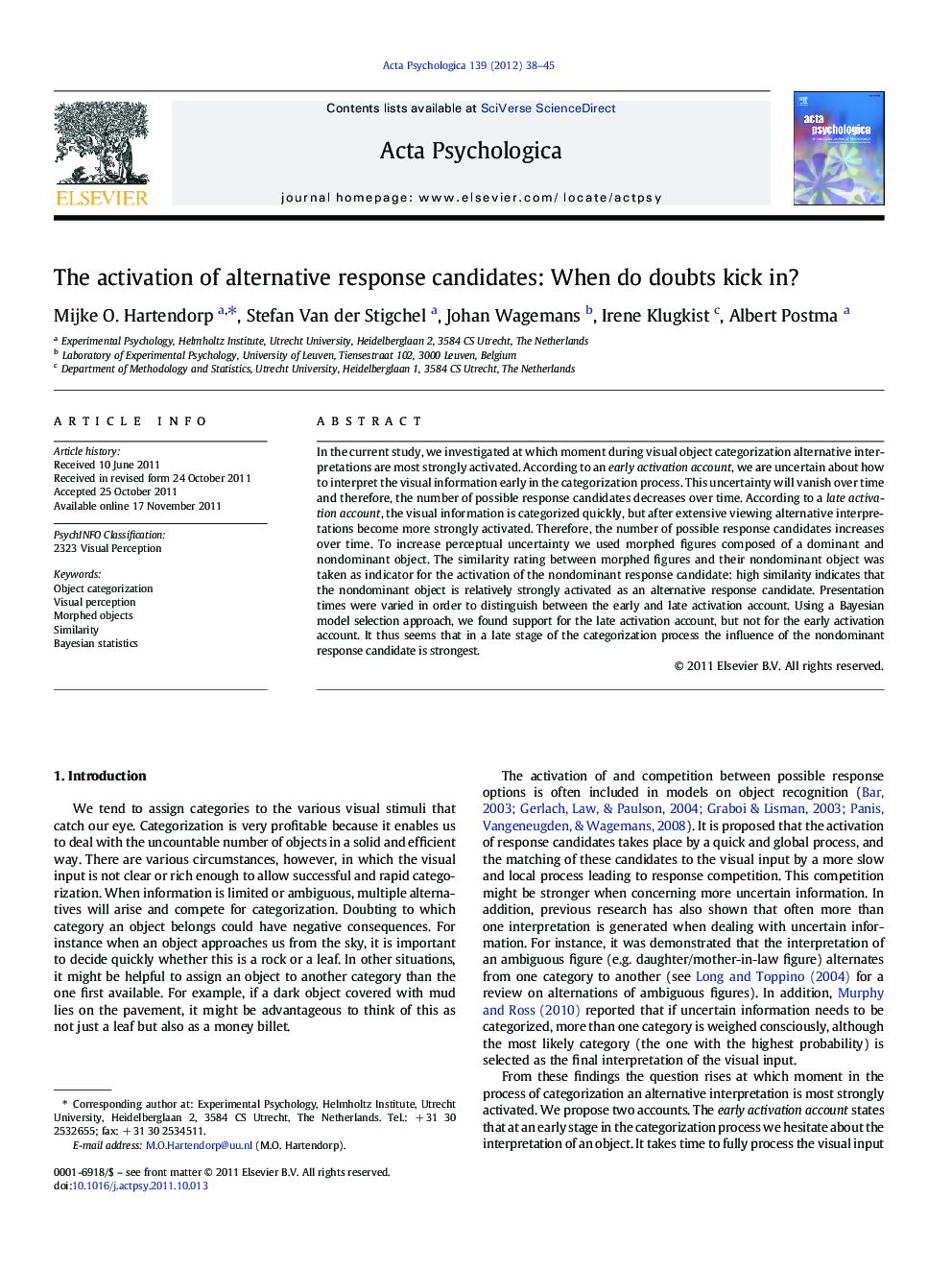| Article ID | Journal | Published Year | Pages | File Type |
|---|---|---|---|---|
| 920091 | Acta Psychologica | 2012 | 8 Pages |
In the current study, we investigated at which moment during visual object categorization alternative interpretations are most strongly activated. According to an early activation account, we are uncertain about how to interpret the visual information early in the categorization process. This uncertainty will vanish over time and therefore, the number of possible response candidates decreases over time. According to a late activation account, the visual information is categorized quickly, but after extensive viewing alternative interpretations become more strongly activated. Therefore, the number of possible response candidates increases over time. To increase perceptual uncertainty we used morphed figures composed of a dominant and nondominant object. The similarity rating between morphed figures and their nondominant object was taken as indicator for the activation of the nondominant response candidate: high similarity indicates that the nondominant object is relatively strongly activated as an alternative response candidate. Presentation times were varied in order to distinguish between the early and late activation account. Using a Bayesian model selection approach, we found support for the late activation account, but not for the early activation account. It thus seems that in a late stage of the categorization process the influence of the nondominant response candidate is strongest.
► When do we consider alternative interpretations while categorizing visual objects? ► We proposed this could be at an early or a late stage of the categorization process. ► Similarity of a morphed figure to its nondominant object indicated other interpretations. ► Varying the presentation time of a morphed figure measured differences in activation. ► We suggest the influence of alternative interpretations is strongest in a late stage.
